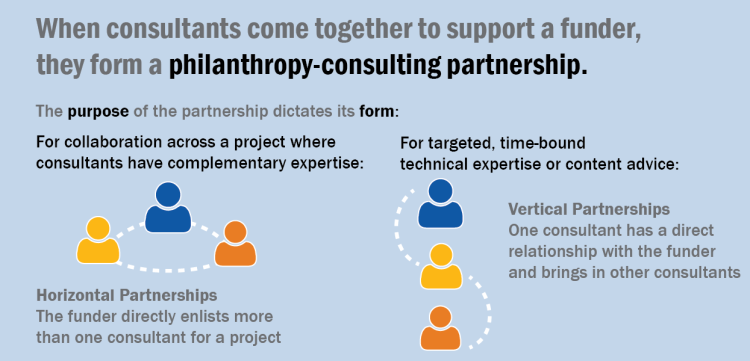The Two Types of Philanthropy-Consulting Partnerships
Over the years we’ve had both productive and challenging experiences working with other consultants on philanthropy projects. Based on these experiences, and in talking with other consultants in the field, we realized there’s a noticeable gap in the literature on how to navigate these philanthropy-consulting partnerships.
This prompted us to write an article for the Foundation Review to spark the conversation on how consulting partnerships, in supporting philanthropy, take different forms and have their own set of benefits and challenges. This is the first in a series of mini-infographics to accompany the article. First up: the types of partnerships.

When two consultants have complementary skills sets, they often form a horizontal partnership in order to round out the overall projects’ credibility and content capacity. Vertical partnerships often take the form of an expert advisor who can review and provide targeted guidance for particular elements of a project.
Horizontal and vertical partnerships operate differently, and funders should consider which structure is most conducive to meeting their needs in any particular circumstance.
Horizontal partnerships require greater coordination and clarity with the funder and both consultants on the specific roles and contributions of each consultant. The degree to which each consultant leads can also vary during the course of the project.
With a vertical partnership, the consultant with the relationship to the funder takes the lead, and must maintain the delicate balance of involving the second consultant enough so that he or she can provide relevant guidance while staying within the scope of the budget and the partnership agreement.

